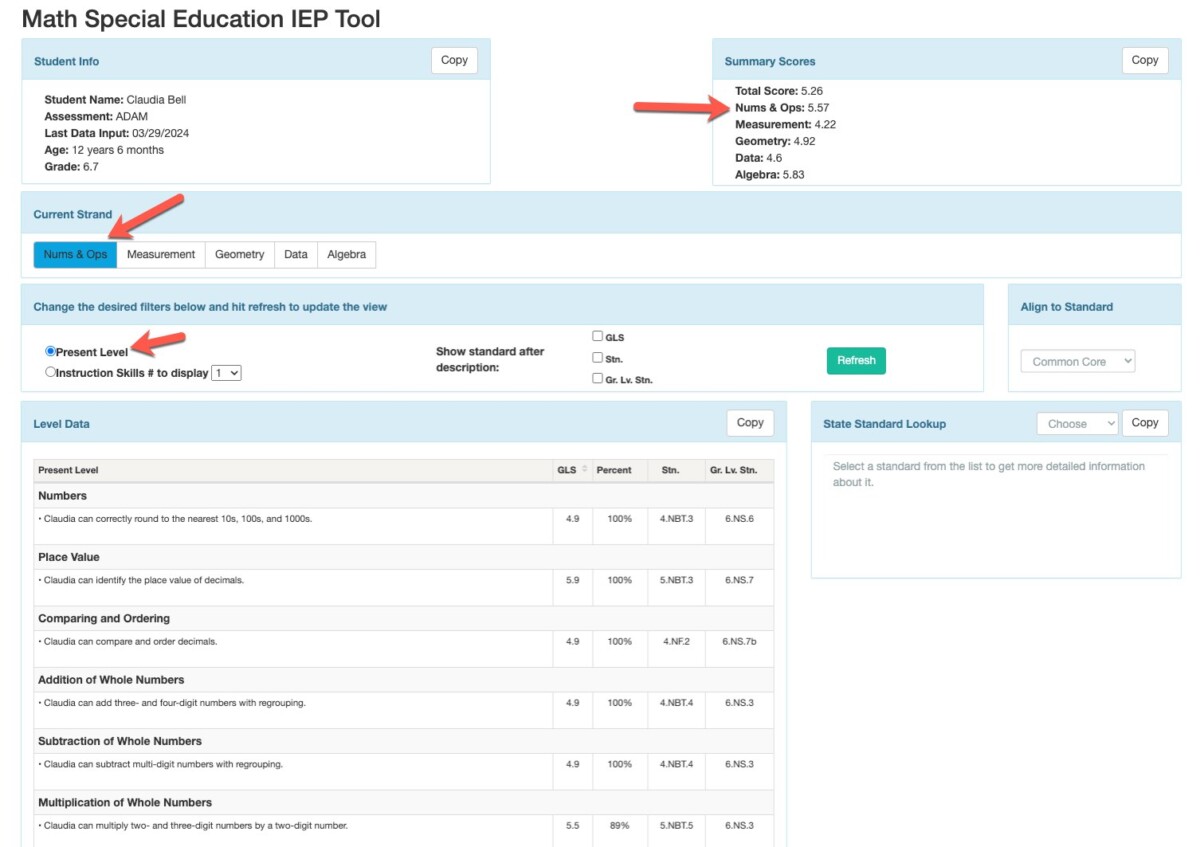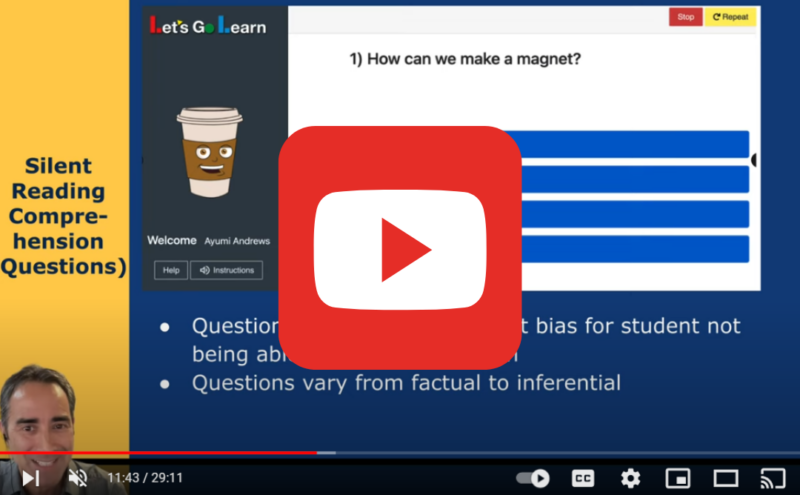Educational Intervention Strategies
Educational Intervention Strategies: Research-Based Techniques for Maximizing Student Success
As dedicated educators, we all share a common goal: to help every student reach their full academic potential. At Let’s Go Learn, we’re passionate about providing teachers with the tools and knowledge they need to make this goal a reality. That’s why we’re excited to dive into the world of educational intervention strategies: research-based techniques that have been proven to enhance student outcomes and drive academic success.
The Power of Precision Diagnostic Data in Personalized Learning
At the heart of effective educational interventions lies precision diagnostic data. By leveraging advanced assessment tools like our Diagnostic Online Reading Assessment (DORA) and Adaptive Diagnostic Assessment of Mathematics (ADAM), teachers gain deep insights into each student’s unique strengths, weaknesses, and learning needs. Armed with this information, they can craft highly personalized intervention plans that target specific skill gaps and promote accelerated growth.
Research consistently shows the transformative impact of data-driven instruction. A study by the National Center for Education Evaluation found that students whose teachers used data to inform their teaching practices demonstrated significant improvements in reading and math achievement compared to their peers (Means et al., 2009). By harnessing the power of precision diagnostic data, we can ensure that every student receives the targeted support they need to thrive academically.
Partnering for Success: Collaborations that Boost Student Outcomes
At Let’s Go Learn, we believe that true educational success is a team effort. That’s why we’re dedicated to building strong partnerships with school districts across the country. By working hand in hand with administrators and teachers, we can develop customized intervention strategies that align with each school’s specific goals, challenges, and student populations.
These collaborations are more than just transactions; they are transformative relationships built on a shared commitment to student success. When schools and educational technology providers come together, magic happens. A study by the U.S. Department of Education found that students in classrooms using educational software in conjunction with classroom teaching scored 14% higher on standardized tests than students receiving traditional instruction alone (Dynarski et al., 2007).
Tailoring Interventions to Diverse Learning Needs
Every student is unique, with specific learning styles, strengths, and challenges. Effective educational interventions must be flexible enough to accommodate this diversity while still maintaining a high bar for academic rigor.
At Let’s Go Learn, we believe in the power of differentiated instruction: tailoring teaching methods and materials to meet each student’s needs. Our software incorporates adaptive technology that adjusts content based on student performance, ensuring that every learner is appropriately challenged and supported.

For students with special needs, personalized interventions are particularly crucial. Our diagnostic assessments provide detailed information to help guide the development of Individualized Education Programs (IEPs) and Behavior Intervention Plans (BIPs). By pinpointing specific areas of need, we can ensure that students receive the targeted interventions they need to succeed.
Research consistently demonstrates the effectiveness of differentiated instruction in boosting student achievement. A study by Tomlinson and colleagues (2003) found that students in classrooms using differentiated instruction outperformed their peers in non-differentiated classrooms on measures of academic progress. When we embrace the diversity of our learners, we can create inclusive educational environments where every student has the opportunity to shine.
Harnessing the Power of Technology
In today’s digital age, technology has become an indispensable tool in educational interventions. At Let’s Go Learn, we harness the power of educational technology to enhance student learning and support teachers in their vital work.
Our online assessment and instructional platforms provide students with engaging, interactive learning experiences tailored to their individual needs. Adaptive software adjusts content in real time based on student performance, so that every student encounters material at the optimal level of difficulty.
Technology also offers powerful tools for progress monitoring and data analysis. Our platform provides teachers with detailed reports on student performance, helping them track progress over time and identify areas where additional support may be needed. By leveraging technology to inform instructional decision-making, we can create a continuous cycle of improvement that drives student success.
The research on educational technology is clear: when used effectively, this technology can have a significant positive impact on student achievement. A meta-analysis by Cheung and Slavin (2013) found that educational technology applications had a positive effect on math achievement, with an average effect size of 0.15. By integrating technology into our interventions, we can amplify their effectiveness and reach more students with personalized support.
Overcoming Challenges, Achieving Excellence
Implementing effective educational interventions is not without its challenges. Limited resources, time constraints, and resistance to change can all present obstacles to success. However, at Let’s Go Learn, we believe that these challenges are opportunities in disguise—chances to innovate, collaborate, and find creative solutions that benefit students.
Collaboration is also crucial for successful intervention implementation. By working together as a community of educators—sharing knowledge, resources, and best practices—we can overcome obstacles and achieve more than we ever could alone.

Conclusion: Unlocking Every Student’s Potential
By harnessing the power of precision diagnostic data, research-based interventions, and educational technology, we can create personalized learning experiences that meet each student’s unique needs and drive accelerated growth.
But we can’t do it alone. It takes a village to raise a child, and it takes a community of dedicated educators to help every student succeed. That’s why we’re committed to partnering with schools, supporting teachers, and working tirelessly to develop innovative solutions that make a real difference in the lives of students.
Together, we can unlock every student’s potential and create a brighter future for all. Let’s go learn!
Frequently Asked Questions
1.How can teachers assess the effectiveness of educational intervention strategies?
Teachers can assess the effectiveness of educational intervention strategies through a variety of methods, including collecting data on student academic performance before and after implementing interventions, comparing test scores and grades, and gathering student feedback. Research shows that such data-driven assessment methods contribute to improved student outcomes and help inform instructional decision-making (Johnston et al., 2019).
2.How can educational intervention strategies be tailored to different learning styles?
Educational intervention strategies can be tailored to different learning styles by adopting a flexible and personalized approach. Understanding each learner’s unique strengths and preferences is crucial in developing effective interventions. Visual learners benefit from visual aids and diagrams, auditory learners engage with lectures and discussions, and kinesthetic learners thrive with hands-on activities. A study by Dunn and Dunn (1992) found that matching teaching methods to students’ learning styles resulted in higher academic achievement and improved classroom behavior.
3.How can technology be incorporated into educational intervention strategies?
Technology can be seamlessly integrated into educational intervention strategies to enhance student learning and support academic success. Digital tools like Let’s Go Learn’s online diagnostic assessments and instructional platforms provide interactive, engaging learning experiences tailored to individual needs. Research shows that technology-based interventions can significantly improve student performance, with a meta-analysis of 58 studies finding a positive effect on test scores (Zhao et al., 2018). Adaptive technology tracks progress and provides personalized feedback, fostering self-directed learning and promoting mastery of subject matter.
4.What are some challenges and barriers to implementing educational intervention strategies?
Challenges in implementing educational intervention strategies include limited resources, inadequate teacher training, resistance to change, and limited stakeholder collaboration. In a 2019 survey by the National Center for Education Statistics, 43% of teachers reported limited access to resources as a hindrance to effectively implementing interventions. Research has also shown that resistance to change and lack of collaboration can impede the successful adoption of intervention strategies and inhibit student outcomes (Smith et al., 2018). Addressing these challenges is crucial for ensuring the efficacy of educational interventions.
5.What are some evidence-based educational intervention strategies?
Evidence-based educational intervention strategies include explicit instruction, formative assessment, and differentiated instruction. Explicit instruction is supported by research demonstrating its effectiveness in enhancing student learning outcomes (Archer & Hughes, 2011). Formative assessment guides instruction and provides ongoing feedback to students, leading to improved academic performance (Black & Wiliam, 1998). Differentiated instruction caters to individual student needs, promoting engagement and achievement (Tomlinson & Allan, 2000). Numerous studies have demonstrated the positive impact of these strategies on student achievement and educational outcomes (Hattie, 2009; Waugh & Waugh, 2012).




Leave A Comment